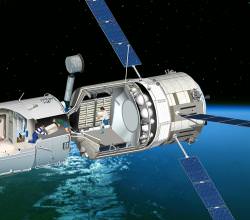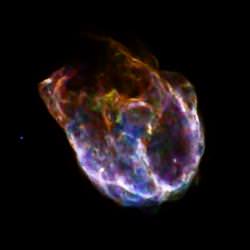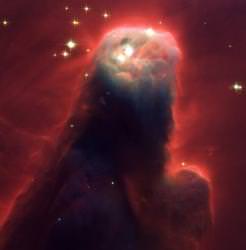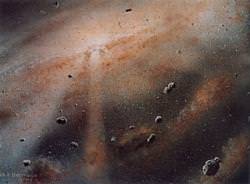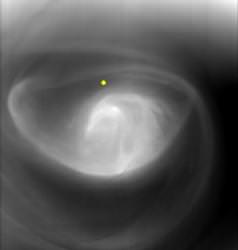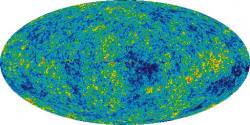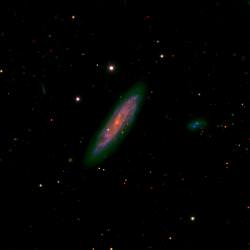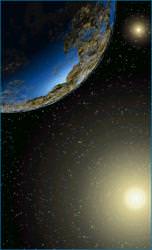Do you have a product or service that you’d like to market to space enthusiasts? Why not consider advertising on the Outer Space Advertising network? We’re a collection of space news websites, forums and podcasts that reach more than 1 million unique people every month.
If you’re interested in promoting your products to our network of astronomy enthusiasts, please contact us at [email protected].
Existing clients, log into your control panel.
Pricing
We have 4 standard sized banners available.
| Ad Type |
Size(in pixels) |
CPM |
| Leaderboard |
728×90 |
$7 |
| Skyscraper |
600×160 |
$7 |
| Square Ad |
300×250 |
$7 |
| Button |
125×125 |
$3 |
Discounts are available for large volume purchases.
Media Formats
We can accept any kind of advertising, including JPGs, GIFs, animated GIFs, text, Java, Flash, or HTML; however, we won’t accept any kind of popup or interstitial advertisements because they’re frustrating for users.
Sites in the Network
Universe Today – 300,000 visitors, 700,000 pageviews, 35,000 RSS subscribers
Universe Today is one of the top space and astronomy news websites on the Internet, published by Fraser Cain. The site covers breaking news in astronomy research, space sciences, and human and robotic space exploration. It’s aimed at science enthusiasts who don’t necessarily have a science background.
Bad Astronomy – 500,000 visitors, 800,000 pageviews, 13,000 RSS subscribers
Bad Astronomy is the website and blog of the noted astronomer and author Dr. Philip Plait. On the site, he debunks cosmic myths and misconceptions, and uses them to write about real science. Opinionated and funny, he brings an insider’s knowledge about astronomy while still making it fun and entertaining to read. Bad Astronomy was voted the Best Science Blog in the 2007 Weblog Awards.
Star Stryder – 15,000 visitors, 40,000 pageviews, 1,000 RSS subscribers
Written by Dr. Pamela L. Gay, Star Stryder explores astronomy, space science, academia, and the politics that accompanies human exploration of the sky. Best known as the sexy female voice on Astronomy Cast and in the original Slacker Astronomy podcast series, Pamela is a rising star in the world of astronomy blogging, with work appearing in the Open Lab anthology of the best science blogs of 2007. Her writing combines analogy, passion, and a professor’s understanding of where it’s easy to get lost.
Bad Astronomy/Universe Today Forum – 150,000 visitors, 800,000 pageviews, 33,000 members
The Bad Astronomy/Universe Today Forum, or BAUTForum is the most popular space and astronomy forum on the entire Internet. At any time, there are more than 1,000 people simultaneously participating in the community, discussing space and astronomy topics, such as telescopes, astrophotography and human spaceflight.
Astronomy Cast – 30,000 visitors, 55,000 pageviews, 200,000 downloads
Astronomy Cast is the most popular astronomy-related podcast, hosted by Fraser Cain and Dr. Pamela Gay. Each episode focuses on one specific aspect of astronomy, such as dark matter or the search for alien life. The hosts make the information exciting and accessible through an informal conversation style, and yet they don’t talk down to the listeners.
Visitor Demographics
Who is visiting our sites? On average our visitors are much better educated and have a much higher income than Internet traffic in general. Here are the results of a recent survey that received 3100 responses.
| Age |
Our Network |
Internet in General |
| Under 18 |
3% |
20% |
| 18-24 |
15% |
17% |
| 25-34 |
27% |
17% |
| 35-44 |
25% |
14% |
| 45-54 |
17% |
14% |
| 55-64 |
9% |
10% |
| 65-74 |
3% |
4% |
| 75+ |
1% |
3% |
| Gender |
Our Network |
Internet in General |
| Male |
87% |
53% |
| Female |
13% |
47% |
| Household Income |
Our Network |
Internet in General |
| Under $20,000 |
10% |
15% |
| $20,000 – $34,999 |
9% |
11% |
| $35,000 – $49,999 |
10% |
11% |
| $50,000 – $74,999 |
18% |
14% |
| $75,000 – $99,999 |
14% |
9% |
| $100,000 or more |
22% |
14% |
| Prefer not to answer |
17% |
25% |
| Education |
Our Network |
Internet in General |
| Some High School |
1% |
7% |
| High School Grad |
6% |
15% |
| Some College |
26% |
25% |
| College Grad |
34% |
27% |
| Post-Graduate Work |
11% |
8% |
| Post-Graduate Degree |
22% |
17% |
| Bookmarked Site |
Our Network |
Internet in General |
| Yes |
81% |
48% |
| No |
19% |
52% |
| Occupation |
Our Network |
Internet in General |
| Senior Management |
3% |
4% |
| Retired |
7% |
11% |
| Not Employed |
4% |
7% |
| Other Management |
3% |
5% |
| Professional |
28% |
22% |
| Technical |
29% |
9% |
| Sales |
2% |
5% |
| Administrative |
3% |
6% |
| Other Employed |
8% |
11% |
| Homemaker |
1% |
5% |
| Student |
14% |
15% |
| Time on the Internet |
Our Network |
Internet in General |
| < 1 hour/week |
1% |
6% |
| 1-2 hours/week |
2% |
14% |
| 3-5 hours/week |
9% |
22% |
| 6-10 hours/week |
19% |
22% |
| 11-20 hours/week |
26% |
16% |
| > 20 hours/week |
43% |
20% |

